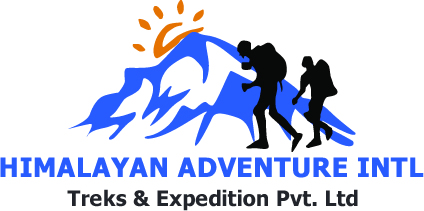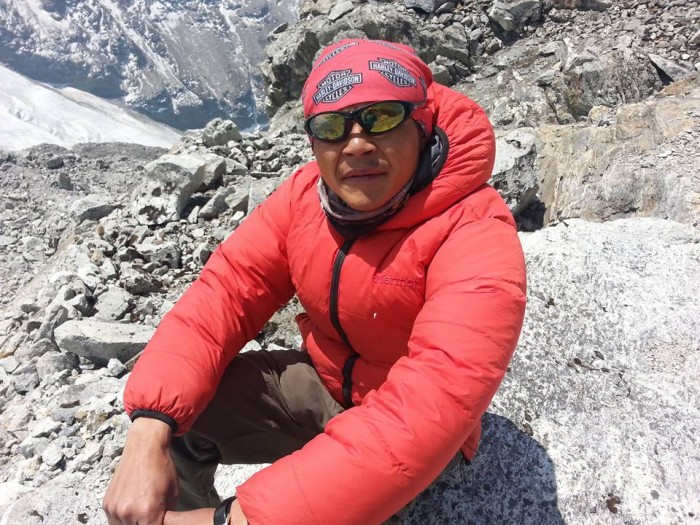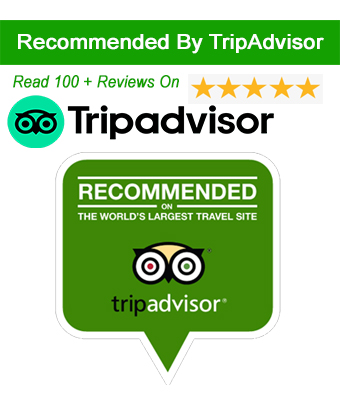Nestled in the heart of the Annapurna Sanctuary, Tent Peak, also known as Tharpu Chuli, stands as one of Nepal’s most accessible and rewarding trekking peaks. With its moderate altitude of 5,663 meters, this climb is perfect for trekkers looking to transition into alpine climbing. This comprehensive guide covers everything you need to know: from the best time to climb Tent Peak, to solo, couple, and group Tent Peak climbing costs, route details, and tips for preventing AMS (Acute Mountain Sickness)—making it ideal for first-timers and seasoned trekkers alike.
About Tent Peak (Tharpu Chuli)
Tent Peak earns its name due to its unique tent-like shape, offering panoramic views of the Annapurna range, including Annapurna I (8,091m), Machapuchare (6,993m), Hiunchuli (6,441m), and other Himalayan giants. It is considered a non-technical trekking peak under Nepal Mountaineering Association (NMA) Group B category, but it still demands proper acclimatization, physical preparation, and some climbing skills.
Best Time to Climb Tent Peak
The best time to climb Tent Peak is during the pre-monsoon (spring) and post-monsoon (autumn) seasons. These periods offer the most stable weather conditions, clearer skies, and optimal visibility.
Spring (March to May)
-
Advantages: Blooming rhododendrons, longer daylight hours, warmer temperatures.
-
Weather: Moderate and stable.
-
Popularity: High – ideal for social climbers.
Autumn (September to November)
-
Advantages: Crystal-clear skies, excellent visibility of mountain ranges.
-
Weather: Dry, cold, and stable.
-
Popularity: Very high – perfect for photography and stunning vistas.
Off-Seasons (Winter & Monsoon)
Verdict: For the best overall experience, plan your expedition between March–May or September–November.
Climbing Route Overview
The Tent Peak climbing route takes you deep into the Annapurna Sanctuary, one of the most scenic and sacred regions in Nepal. The journey begins from Pokhara and follows the classic Annapurna Base Camp (ABC) trail before diverging towards the peak.
Day-by-Day Route Itinerary
Day 1: Arrival in Kathmandu (1,400m)
Meet your guides, check gear, and attend a briefing.
Day 2: Drive/Fly to Pokhara (827m)
Explore the lakeside city and prepare for the trek.
Day 3: Drive to Ghandruk (1,940m)
A cultural Gurung village with stunning views.
Day 4: Trek to Chhomrong (2,170m)
The gateway to the Annapurna Sanctuary.
Day 5: Trek to Dovan (2,600m)
Enter the lush jungle trail of the Modi Khola valley.
Day 6: Trek to Deurali (3,200m)
Acclimatization starts to become essential.
Day 7: Trek to Annapurna Base Camp (4,130m)
Via Machapuchare Base Camp (3,700m). Jaw-dropping amphitheater of peaks.
Day 8: Acclimatization Day at ABC
Optional hike and climbing practice.
Day 9: Trek to Tent Peak Base Camp (4,500m)
Off the main trail, through glaciers and moraine.
Day 10: Summit Day (5,663m) and return to Base Camp
Alpine start; rope-up for steep sections; incredible summit panorama.
Day 11: Return to Machapuchare Base Camp
Day 12–14: Retrace steps to Jhinu and return to Pokhara
This route not only maximizes altitude adaptation but also offers rich biodiversity, cultural immersion, and visual delight.
Solo Tent Peak Climbing Cost
For independent adventurers, solo Tent Peak climbing cost is higher due to the requirement for private guide services and permits that aren't shared.
Average Solo Cost Breakdown:
| Service |
Cost (USD) |
| Climbing Permit |
$250 |
| Guide (per day x 14) |
$560 |
| Porter (optional) |
$280 |
| Accommodation and Meals |
$400 |
| Transportation (Kathmandu–Pokhara–Nayapul) |
$150 |
| Climbing Gear Rental |
$200 |
| Insurance and Misc |
$150 |
| Total Estimate |
$1,990 – $2,200 |
Note: Solo climbers are legally required to hire a licensed guide for trekking and climbing in Nepal as of 2023.
Couple Tent Peak Climbing Cost
Climbing as a couple reduces per-person costs by sharing guides, accommodation, and porters.
Average Cost for Two:
| Service |
Cost (USD) |
| Climbing Permits (2x $250) |
$500 |
| Shared Guide |
$560 |
| Shared Porter |
$280 |
| Lodging & Food (2x) |
$800 |
| Transport |
$300 |
| Gear Rentals |
$400 |
| Insurance & Misc |
$300 |
| Total Estimate for Couple |
$3,140 – $3,500 |
| Per Person Cost |
$1,570 – $1,750 |
Tip: Ideal for adventurous honeymooners or friends seeking a Himalayan challenge.
Group Tent Peak Climbing Cost
Traveling in a group is the most cost-effective way to climb Tent Peak. Group discounts apply for guides, permits, accommodation, and transportation.
Example Group Cost for 6 Climbers:
| Item |
Total Cost (USD) |
Per Person |
| Climbing Permits |
$1,500 |
$250 |
| Guide (1 Lead + 1 Assistant) |
$950 |
$158 |
| 3 Porters |
$840 |
$140 |
| Meals & Lodging |
$2,400 |
$400 |
| Transport |
$600 |
$100 |
| Gear Rental |
$1,200 |
$200 |
| Insurance & Misc |
$900 |
$150 |
| Total Group Cost |
$8,390 |
~$1,400 per person |
Tip: Group expeditions foster camaraderie and often come with added safety and support.
AMS (Acute Mountain Sickness) and Prevention
Climbing Tent Peak involves gaining over 5,600m of elevation, which puts trekkers at risk of AMS (Acute Mountain Sickness). Recognizing and preventing AMS is crucial.
AMS Symptoms
-
Headache
-
Nausea or vomiting
-
Dizziness
-
Fatigue
-
Shortness of breath
-
Sleep disturbances
Prevention Tips
-
Acclimatize Gradually: The itinerary should include rest days (especially at ABC).
-
Hydration: Drink 3–4 liters of water daily.
-
Avoid Alcohol & Smoking: These increase the risk of AMS.
-
Climb High, Sleep Low: Helps the body adjust to altitude.
-
Use Diamox (Acetazolamide): After consulting a doctor.
-
Know When to Descend: If symptoms worsen, descend immediately.
Emergency Tip: Always have travel insurance that covers high-altitude evacuation via helicopter.
Why Choose Himalayan Adventure International Treks?
At Himalayan Adventure International Treks, we specialize in custom climbing experiences that balance adventure, safety, and cultural immersion. Our Tent Peak expeditions are led by certified Sherpa guides, equipped with high-quality gear, and backed by a responsive logistics team.
Our Services Include:
-
Climbing permits and insurance
-
Airport pickups and domestic flights
-
Accommodations in Kathmandu and Pokhara
-
Porters and support staff
-
Climbing and camping gear
-
Full-board trek and climb
-
Emergency assistance
We also organize custom itineraries for solo, couple, and group climbers. Whether you’re a seasoned mountaineer or a trekking enthusiast aiming for your first peak, we are here to make your Himalayan dream a reality.
Tent Peak Climbing is a magnificent adventure that blends trekking with mountaineering. Whether you're seeking solitude on a solo Tent Peak expedition, a memorable journey with a partner, or the thrill of a group climbing experience, this peak offers it all. With proper preparation, awareness of AMS sickness and prevention, and the right local operator like Himalayan Adventure International Treks, you’ll come away with unforgettable memories and perhaps even a newfound passion for Himalayan summits.

 Plan Your Trip Now
Plan Your Trip Now 


